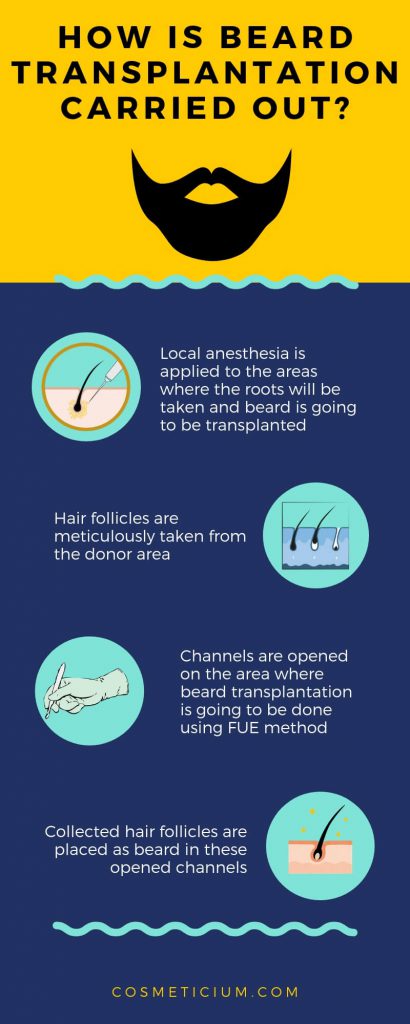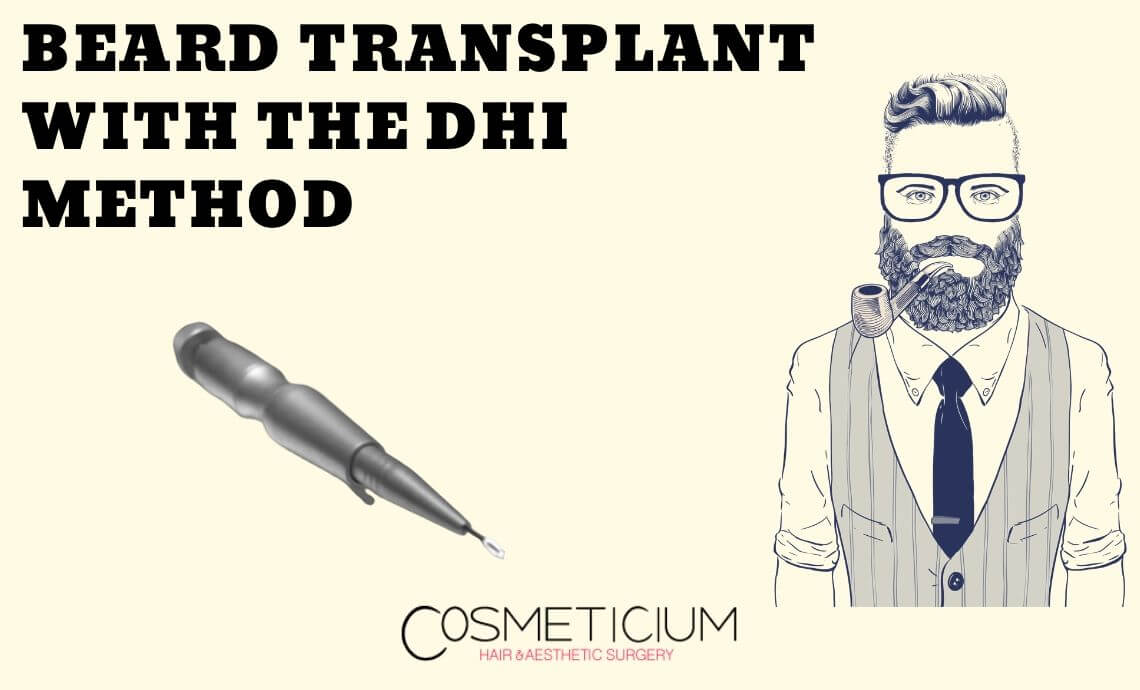Beard affects men’s general appearance significantly. Having a bushy and even beard is a must for a charismatic and attractive look. But, not all men have the beard they want. Cases like having a very sparse beard, hereditary factors and accidents may cause either a loss of beard or a sparse beard. To correct this situation, the beard transplant is performed. Beard transplant is being developed every day and people’s needs are being met more effectively. Following the increased interest in hair transplantation, the interest in beard transplant is also increasing every day. This has resulted in the use of different techniques in the beard transplant. In our article, we will talk about how the beard transplant with the DHI is performed and its differences and advantages in comparison to other techniques.
As it is known, the newest and most successful technique developed for hair transplantation is DHI hair transplantation. This technique, which gives extremely effective results, meets people’s expectations to a great extent. DHI method is now used in the beard transplant as well.
The recently developed DHI technique provides many advantages when compared to other techniques. Therefore, people prefer this technique more and more these days. The fact that, with its many advantages, this new technique is now being used in the beard transplant is considered to be an important detail. We have gathered everything you need to know about the beard transplant with the DHI method.
Table of Contents
Beard Transplant Steps with the DHI Method
Certain steps should be followed when performing the beard transplant with the DHI method. Before moving onto these steps, it shouldn’t be forgotten that the DHI technique can only be performed by doctors specialized in this field. As it is a new technique, preferring specialists providing high-quality service is extremely important. The steps to be followed when performing the beard transplant using this technique are as follows:
1. Determination of the Areas to be planted
The first stage in the beard transplant is planning. At this stage, areas to be planted should be determined. Beard may not grow due to being beardless or a similar reason. Or the beard may have been lost because of certain disorders or accidents. To compensate these correctly, the areas to be planted must be determined accurately.
2. Calculation of the Number of Grafts to be planted
In the beard transplant, it is very important to have a natural result. To do this, after the determination of the areas, the number of grafts to be planted in those areas is calculated. To configure the beard density correctly, this calculation should be done very carefully.
3. Collection of the Hair Grafts
After the planning is completed, the next stage begins and collecting the required grafts starts. First of all, the neck area is examined. If there are sufficient grafts here, other parts are not checked. But, in case there aren’t enough grafts, grafts can be collected from different parts of the body. For the beard transplant, grafts are usually enough.
Hair grafts are collected one by one. While grafts used to be collected as a whole in the earlier methods, today they are taken one by one. The reason for this is the need for an incision for taking the grafts as a whole. As incision means suturing and thus scars, one by one collection is preferred. The grafts are loosened by a special device and then they are collected.
4. Graft Plantation
The collected grafts are planted in the determined areas. The most important difference of the DHI method becomes clear at this point. While there is a need to open canals in the other techniques, in this technique plantation is performed without opening any canals. For this process, special pens called Choi or Implanter are used. These pens are patient-specific and new pens are used for every patient. After they are used, they are thrown away.
The previously collected grafts are placed carefully in the pens called choi. Then, using this pen, the plantation is performed at the desired angle. The angle is extremely important for the beard to have a natural look. If the angles are not adjusted correctly when performing the beard transplant with the DHI method, some problems will be inevitable. This, in return, means failure in meeting the expectations fully. For this reason, the DHI method is a special technique as it makes it possible to adjust the angles easily.
5. Growth of Beard
After the beard plantation, the growth process begins. The grafts get used to their new areas and after a while, they start to grow. This growth is permanent and continues for life. There is no possibility of the planted beard to fall. To have permanent results, it shouldn’t be forgotten that 8-12 months are needed. Therefore, one has to be patient for the full results.

You May Also Like: 5 Things That Those Who Want to Have Beard Transplantation Should Know
Advantages of the DHI Method
There are different techniques used in the beard transplant. But, the DHI technique stands out with the advantages it provides. It wouldn’t be wrong to list some of its advantages as follows:
- There is no incision in the beard transplant with the DHI Method. Therefore, there is no need for suturing, thus there are no scars left.
- The angles of the beard are easily adjusted and a natural look is obtained.
- There is no need for opening canals for the plantation.
- The grafts remain outside shorter as there is no waiting for canal opening. This, in return, increases the success of the procedure.
- Thanks to the specially developed pens, grafts are planted in the perfect places prepared for them.
What Are its differences from FUE Method?
The earlier technique that was preferred for the beard transplant was the FUE method. But, after the development of the DHI Method, it is preferred less and less. While there are some similarities between the two methods, there are also serious differences. Especially, the differences in the application stage affect the results directly. The differences between DHI and FUE are in general as follows:
- While there are no canals opened in the DHI technique, they should be opened in the FUE Method.
- In the DHI technique, a specially developed pen is used and the graft angles are easily adjusted.
- The recovery period in the DHI technique is shorter as there is no canal opening.
- While the FUE technique takes an average of 6-8 hours, the DHI method takes 8-10 hours. In the beard transplant, it may be shorter.
- There is an extra cost of materials used in the DHI method. Therefore, the amount to be paid for this method is relatively higher.
- In the DHI technique, intensive planting can be done in a specific area. The FUE technique is more limited at this point.
When the above factors are considered, it is clear that the DHU technique is more advantageous. Therefore, for high success, the DHI method has been used in the beard transplant as well.
To Have the Beard Transplant with the DHI Method or to Get the More Detailed Information You Can Fill Out Our Online Consultation Form Here.

